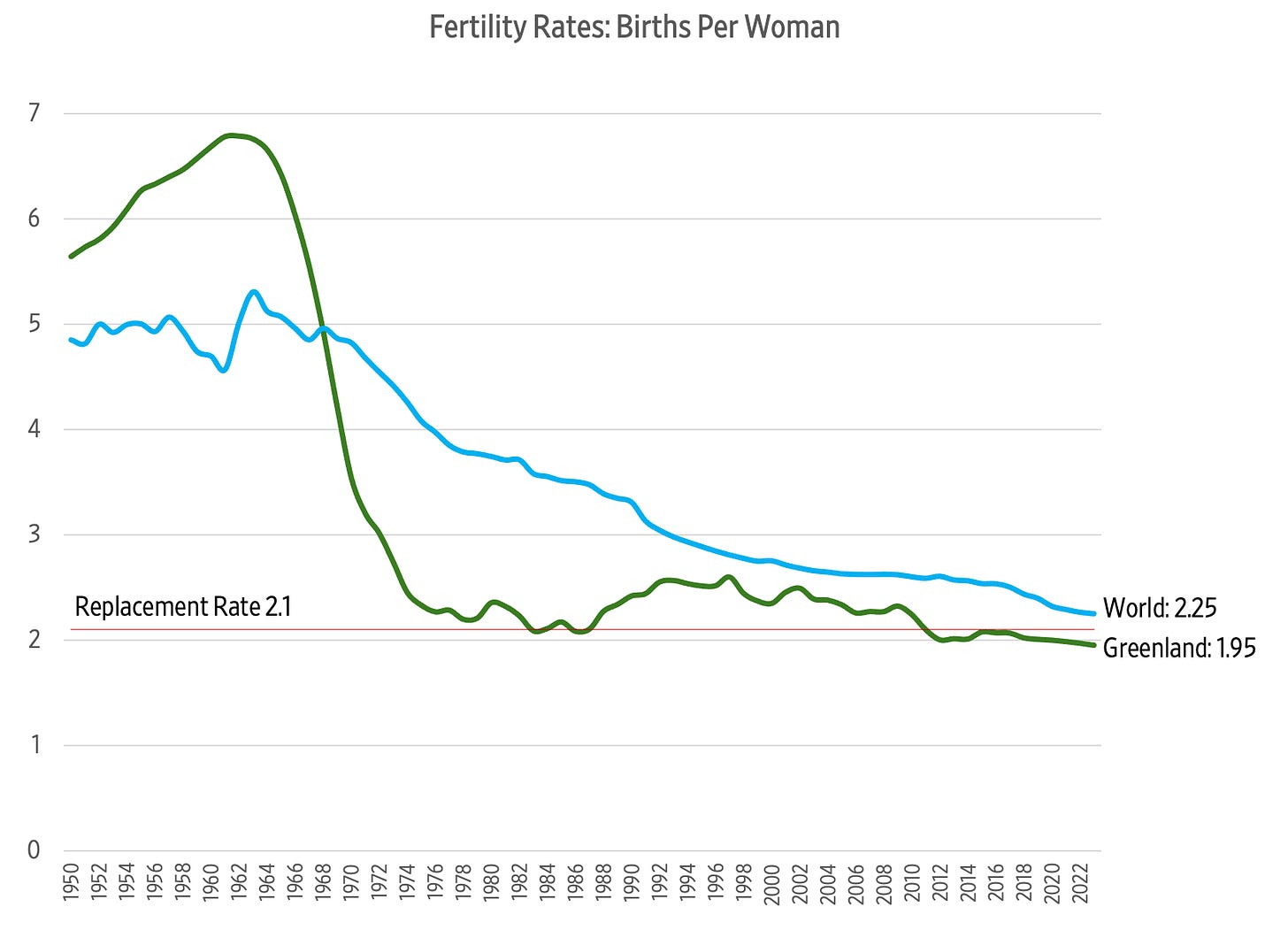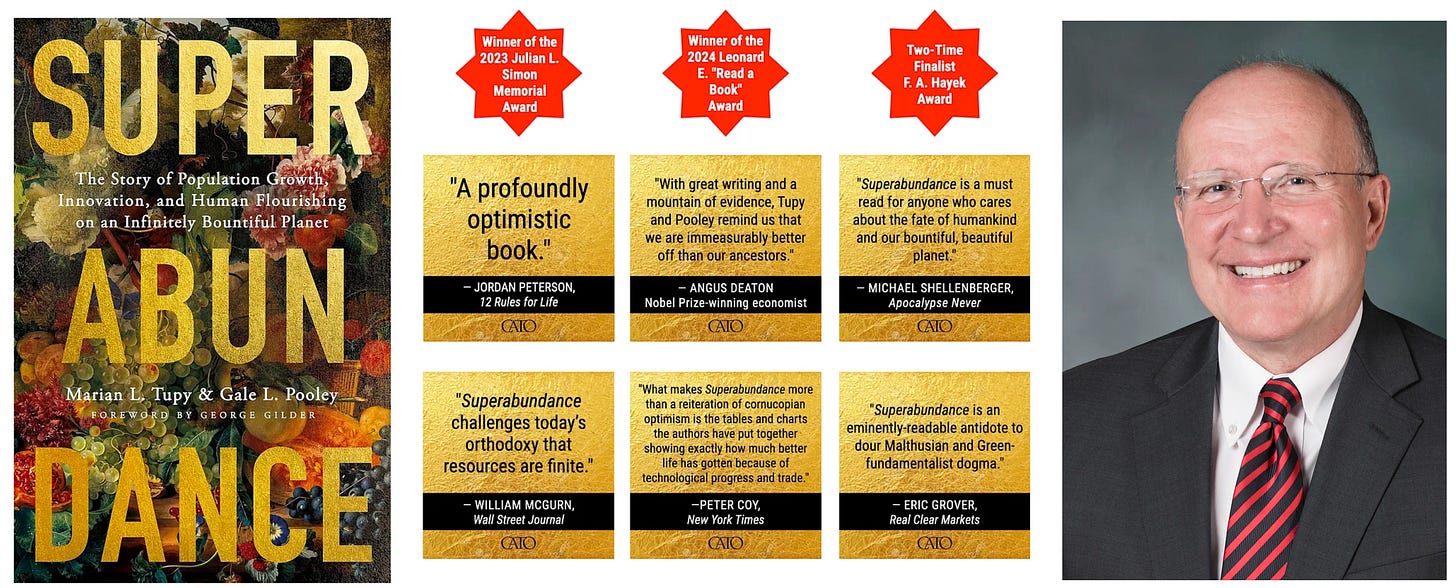Lyman Stone of the Institute for Family Studies wrote about the collapse of fertility rates in Greenland. He notes that:
In the span of just eight years from 1966 to 1974, fertility rates fell abruptly from 7 children per woman to 2.3. This is the fastest fertility transition in human history. … In 1967, the Danish government began a major campaign to promote IUDs.
From 1971 to 2023 Greenland’s population increased by 20.2 percent, from 46,485 to 55,895. Meanwhile the world grew by 114.6 percent. What if Greenland had simply followed the world rate beginning around 1971? In this case, their population would have grown to 99,777 people.
From 1950 to 1970 Greenland’s annual growth rate ranged from 1.98 percent to 4.47 percent. The world in contrast, ranged from 1.64 percent to 2.25 percent. The year-by-year difference was around 1.38 percent. If Greenland had followed the global decline but had retained their 1.38 percent higher level, their population today would be closer to 201,497, or 335.5 percent higher.
Stone further notes that Greenland is:
…an example of the striking influence that can be exerted by a determined [Danish] government. A full-court-press of political reform, urbanization, healthcare, education, and industrial transformation radically altered Greenlandic fertility. Not even China’s one-child policy was so dramatically successful at reaching its goals…
Greenland’s Future
In 1867 the U.S. purchased Alaska from the Russians for $7.2 million (equivalent to $162 million in 2024). At the time the estimated population was around 2,000 people. Today, Alaska’s population is closer to 740,000. The discovery of oil in the Prudhoe Bay in 1968 and the construction of the Trans-Alaska Pipeline in 1977 transformed Alaska's economy and population.
While lying somewhat north of Alaska, Greenland is 26 percent larger than Alaska (836,000 square miles versus 663,000 square miles). Alaska is about 2.5 times larger than Texas and represents around 17 percent of the U.S. land area.
President Trump has raised question about Greenland’s future. Time will tell if they can become the next Alaska in terms of resource discovery and population growth.
Learn more about our infinitely bountiful planet at superabundance.com. We explain and give hundreds of examples why more people with freedom means much more resource abundances for everyone in our book, Superabundance, available at Amazon.
Gale Pooley is a Senior Fellow at the Discovery Institute, an Adjunct Scholar at the Cato Institute, and a board member at Human Progress.










@galepooley
I know you believe that resources are infinitely abundant, but do you believe that living space is infinitely abundant? I don't believe that living space on earth is infinitely abundant. I do however lean toward thinking that the universe is infinitely abundant when it comes to living space
While I believe it is impossible to run out of resources, it does seem possible to run out of living space on earth. If the population were to rise dramatically on earth people could move to other planets. With more humans, we could have more knowledge to figure those things out and to create advanced technology to do it.
Maybe God created the universe to be infinite so that the human population could never quit growing and we could still always have living space.